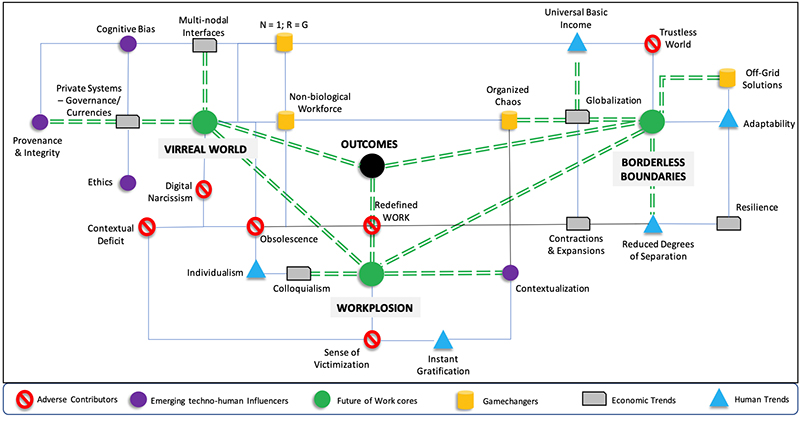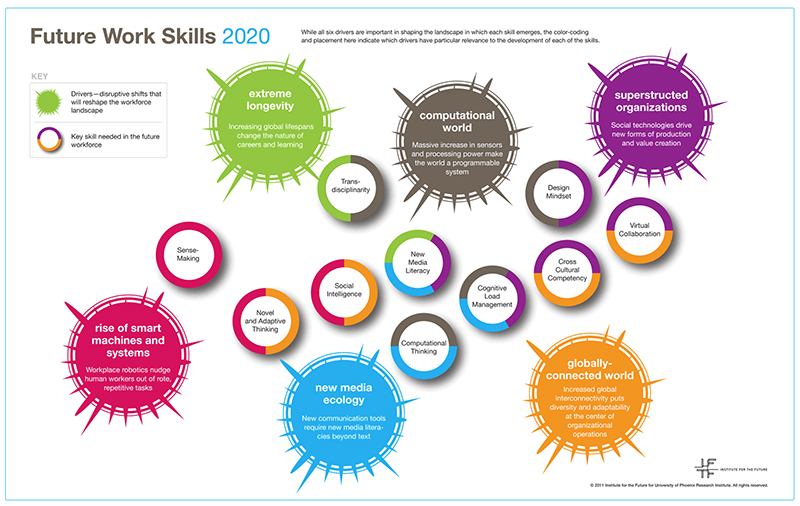Digital Disruption and the Future of Work
The only certainties in this new post-pandemic world are continued disruption and digitalisation of working practices

Digital disruption is a big thing in the business market today and has become relatively intimidating as new technologies emerge.
Reimagining the World Order
The pace of the invention of new technologies has begun to alarm humans into inquiring about what would be left to do if machines could completely replace humans. The workplace ambiguities are increasing at a tremendous pace, perhaps more exponentially compared to the rate of innovation. Meanwhile, talent is changing, and education is abundant. Structural changes in the workplace can be painful but ultimately progressive. Various new techniques driven by AI, machines and deep learning are opening new vistas to gaining business insights. Deployment of such tools in businesses is resulting in greater efficiencies but increasingly diluting the role of people as a factor of production. While this directly impacts the “employed workforce”, organisations have begun to deploy off-balance-sheet talent by adopting an open talent continuum. These shifts are forcing us to reconsider the role of individuals, organisations, hierarchies, accountability workflows, labour laws, etc.

However, questions remain on the nature of evolution, unavoidable disruptions, resistance to change, and dealing with lost opportunities. We believe this question is best addressed not by looking at the impacted but by the forces shaping such changes – evolving customer behaviour, demographics, globalised marketplaces, virtual platforms and the interactions that occur amongst these forces. During our initial knowledge papers on the Future of Work, we articulated the nature of three briquettes influencing corporations and societies worldwide, as exemplified in the infographic below: Virreal World, Workplosion, and Borderless Boundaries.

Meanwhile, we note significant conversations around digital disruption and how these digital tools, technologies and approaches are upending the traditional way of doing things. Every such discussion invariably focuses on the technologies themselves – RPA, AI, NLP, ML, Cognitive Computing, IIOT and the like. We miss the forest for the trees by focusing on the enablers instead of the drivers themselves. As I have patiently argued in my emphasis on the future work involving the three briquettes, so do the two institutes – the Institute for the Future and the University of Phoenix Research Institute.
The crucial point of this research, the entire approach uses foresight as a starting point for a process that IFTF calls Foresight to Insight to Action. This process enables people to take future visions and convert them into meaningful insights and actions they can take to be successful in the future.
The emphasis here is to capture signals – a small or local innovation or disruption that has the potential to grow in scale and geographic distribution. A signal can be a new product, a new practice, a new market strategy, a new policy, or new technology. In short, it catches our attention at one scale and in one locale and points to more significant implications for other areas or even globally. In addition, signals are helpful for people who are trying to anticipate a highly uncertain future since they tend to capture emergent phenomena sooner than traditional social science methods.

In doing so, we can extrapolate and envision the multi-nodal nature of various contributing factors to these three briquettes, particularly their direct and consequential impacts on one another. The interconnects, network effects and consequences to workplaces. The scope of this paper precludes this endeavour, given a different purpose aimed at determining implications for the bulk of young populations spread across the developing world.

Rejectionism has become quite commonplace, manifested in modern-day innovations like crypto-currencies, decentralised financing and more. This is a rejection of traditional models that seem to have failed most of humanity in ways that one can comprehend just by looking at the previous hundred years of the tumultuous history of the planet. But unfortunately, this “opposite” view again has an eerie similarity with the traditional capitalist pursuit – that of exclusionary approach and entitlement. Neither model is good for us, as both will eventually collapse and implode in incomprehensible manners. Therefore, it is time for us to let go of the penchant for taking sides and build a “new” model for all.
Business leaders must prioritise the workforce changes that will fast-forward their digital journey.
About the Author

Bobby Varanasi is one of the acknowledged Top 25 Globalisation Leaders in the Global sourcing space and the Founder of Matryzel Consulting- an independent advisory firm.









.png)